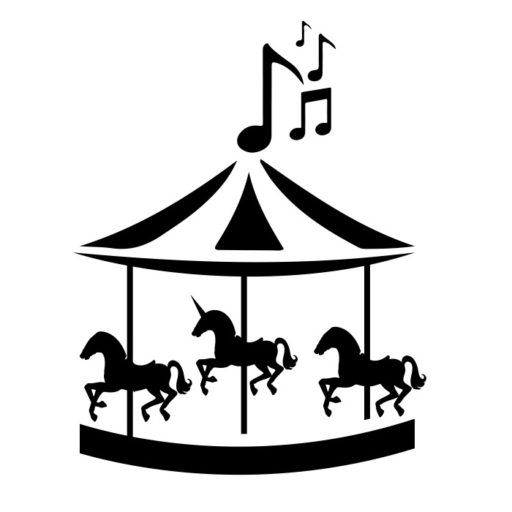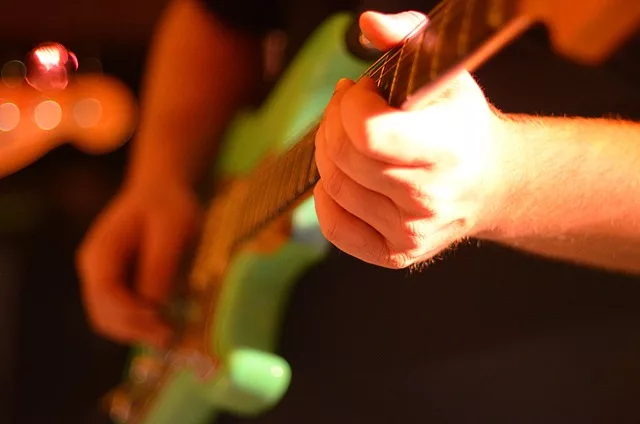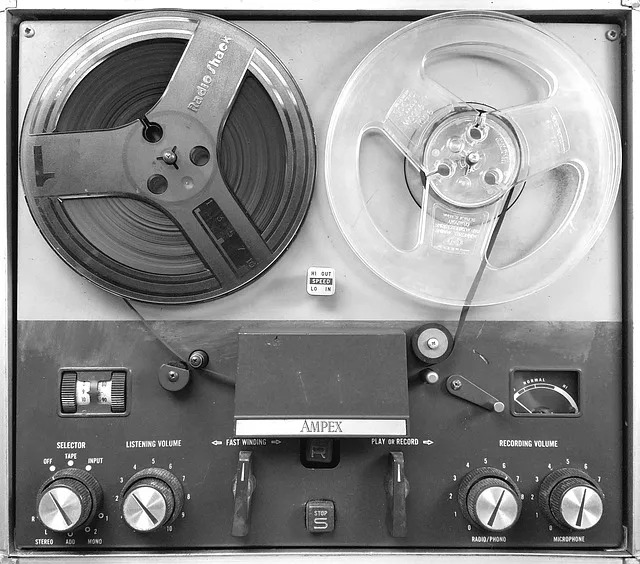DISCLAIMER: Parlor City Sound earns a commission (at no cost to you) if you click a link to Amazon and buy something while visiting this page. This is only applicable to Amazon links—we don't earn a sales commission from anyone else. Read our advertising disclosure & FAQ to learn more about our strict policies on affiliate marketing.
There are some musicians who couldn’t give a fig about how to write a setlist, and others who will stress the minutiae of their band setlist down to the silliest details. We’re talking “which color Sharpie should I write a setlist in, accounting for the stage lights” … that silly. And if you’re wondering if that’s a reference to something I myself asked my bandmates at one point in my life, the answer is that we’re moving onto the next paragraph now so shut up about it gawd!
Creating a band setlist should be a super easy thing to do, right? After all, a setlist is literally just a list of the songs you’re playing at a show. How hard can it possibly be to write a list of songs? Why do we even a need a guide on how to write a setlist?
Well, that’s just it—having a good band setlist matters. And that’s because there’s more riding on your setlist than you might think at first glance. You need to keep the audience engaged, manage crowd energy and your own stamina, and more. So let’s take a moment to learn how to write a setlist, and go over the basics of what your band setlist needs to achieve.
What does your band setlist need to accomplish?
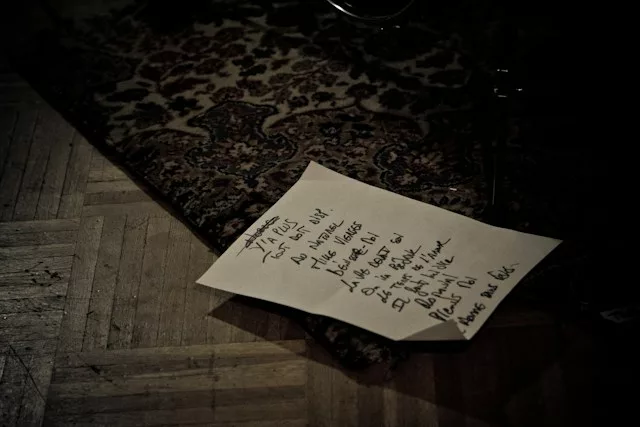
Your band setlist for any given gig has one primary objective over all else: make the show as memorable for the audience as possible. And we do this by setting out with a few important tasks in mind:
- Manage the crowd’s energy levels by arranging the play order of your songs
- Be mindful of the stamina of your bandmates and be sure they can keep up with the band setlist, too
- Make sure the setlist covers your stage time well
- Take stage direction into consideration and include useful notes when applicable
- Avoid the crowd getting bored with the same old material—avoid repeating the same setlists for the same crowds over and over
Related: How to book a gig with your band
Opening and closing the set
You’ll want to start your set off with a great song that grabs the audience’s attention right out of the gate. And likewise, you want to close out the show with another remarkable song that leaves people thinking about you on their drive home. So your two best songs, or most popular songs? Those should serve as your band setlist bookends.
It can be difficult identifying which of your songs are real bangers without crowd input. The songs you love playing won’t always be the songs audiences love hearing, and it’s difficult to trust the objectivity of friends and family. Your nana doesn’t love your screamo death pop, she loves you, so of course she’ll say “that sounds great dearie” while throwing up some devil horns and windmilling.
Early on, just trust your gut and those of your bandmates, too. A few shows in, you’ll have hopefully had a chance to see how audiences react to different songs in your set, and you can adjust as necessary.
Use your band setlist to manage crowd energy (and your own energy, too!)

As humans, we only have so much physical energy and emotional bandwidth to expend in any given stretch of time. Excitement is deceptively exhausting, and can leave a crowd going from the top of the world to the middle of a lull in a single chorus. Over-stimulation will usually leave a crowd bored, tired, or both. So it’s important your band setlist accommodates the management of crowd energy.
Think about the vibe, tempo, genre/ subgenre, and mood of your individual songs, and do your best to create a balance throughout your band setlist by counterbalancing the high-energy stuff with mid-energy and low-energy songs. For example, you might go high, high, mid, high, low, mid, high, mid, high, high. The show starts and ends strong, but uses that middle-energy stuff to give the audience a chance to recuperate some of that energy they’d previously lost. If you’re playing a shorter set, you can go for a bigger bang and worry less about crowd energy, so long as you’re generally mindful of it.
Include stage direction where it’s helpful
Why limit your band setlist to just songs? Your gig is about more than just the music, after all. You’re there to promote your band and convert as many people in the audience into fans of your work as possible. So it’s important to include a little PR work in your setlist, too. And if you have any other time-consuming actions to take care of, you’ll want to calculate that into your band setlist now so you’re not left with too little time on stage.
Be sure to mention your band’s name during your set, and if time allows, it’s always a good idea to briefly pause and plug whatever you’ve got coming up—your new album, your next tour, an upcoming gig, or just mentioning your band website or Spotify material. The key takeaway here is that you’re using your stage time to promote your music act and hopefully get some fresh faces (and ears) into your music marketing funnel.
You should also include any other stage direction that’s time consuming. Swapping out instruments should be accommodated in your band setlist and worked into your plan for stage time. We strongly recommend skipping instrument changes during shorter gigs, too. That tonal shift between your humbucker and P90 guitars is a lot less important than keeping the crowd engaged as an opener.
It’s time for (endless) stage rehearsals
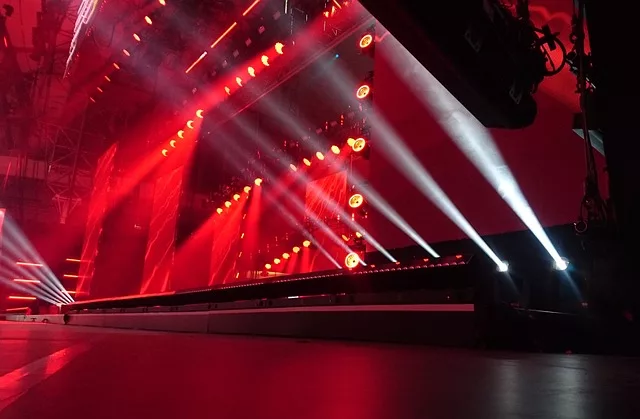
You might be pretty confident in how well your band knows each song in the setlist, but you should never, ever skimp out on stage rehearsals. Take the time and perform your band setlist from start to finish. Rehearse the set as if you’re on stage, and go over every moment of being on stage too. Introduce yourselves, swap instruments, and whatever else will take up time during your set. Are you dancing on stage? Dance during rehearsals. If you’re doing it on stage, do it during rehearsals.
You should also use a stopwatch and time your rehearsals to see how long it takes you to run through your band setlist. Do this repeatedly, with each stage rehearsal, and average out the times. With this data in hand, you’ll have a better idea of how to fine-tune your set to get the most out of your stage time.
Use stage time to gather feedback
And no, we don’t mean cranking the gain knob to eleven and reenacting that opening scene from Back to the Future. We mean audience feedback on your songs. Information that will be infinitely useful when it’s time to write a setlist for your next gig!
You want to pay close attention to how the crowd is reacting to each song. If the audience goes nuts after a breakdown, or they’re dancing hard to a particular song, or you notice people singing along to an earworm chorus … all of that is useful information that will help you write a setlist for your next gig. And you want to keep an eye out for bad stuff, too. The crowd getting bored or even despondent means a particular song, or perhaps the band setlist itself, need some tweaking.
Don’t let the idea of writing a killer band setlist stress you out
Knowing how to write a setlist is definitely a talent every musician should develop. It’s incredibly useful to understand not just how to write a setlist, but what factors affect the quality of a band setlist too. But like nearly all things in the music world, writing a great setlist is something that takes copious amounts of practice.
The best way to learn how to write a setlist is to get up on stage and experiment. This guide can help you avoid a lot of the trial-and-error stuff, but at the end of the day, every music act and every set is unique. These general rules apply to most acts, but there’s a lot of nuance that goes into a band setlist too, and you’re always going to find yourself needing to fine-tune things. So get out there, have as much fun as possible, and do as much learning as you can along the way!
